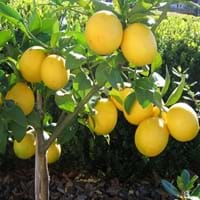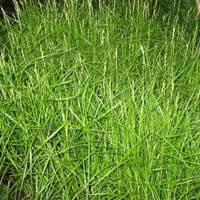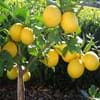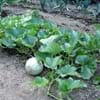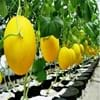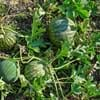Life Span
Perennial
Perennial
Origin
Hybrid origin
North-Central United States, Canada
Types
Not Available
Not Available
Habitat
Warmer regions
Moist Soils
USDA Hardiness Zone
9-11
3-8
Sunset Zone
H1, H2, 8, 9, 12, 13, 14, 15, 16, 17, 18, 19, 20, 21, 22, 23, 24
4, 5, 6, 7, 8, 9, 14, 15, 16, 17, 18, 19, 20, 21, 22, 23, 24
Habit
Oval or Rounded
Clump-Forming
Flower Color
White
Gold, Brown
Flower Color Modifier
Bicolor
Bicolor
Fruit Color
Orange, Lemon yellow
Non Fruiting Plant
Leaf Color in Spring
Dark Green
White, Green
Leaf Color in Summer
Dark Green
White, Green
Leaf Color in Fall
Dark Green
Yellow
Leaf Color in Winter
Light Green
Not Available
Leaf Shape
Elliptic
Acicular
Plant Season
Spring, Summer, Fall, Winter
Spring, Summer, Fall
Sunlight
Full Sun
Full Sun, Partial Sun, Partial shade
Growth Rate
Medium
Medium
Type of Soil
Loam, Sand
Loam
The pH of Soil
Acidic, Neutral, Alkaline
Acidic, Neutral
Soil Drainage
Well drained
Average
Bloom Time
Indeterminate
Late Spring, Early Summer, Summer
Tolerances
Drought
Drought
Where to Plant?
Container, Ground, Pot
Ground
How to Plant?
Cuttings
Bulbs
Plant Maintenance
Medium
Medium
Watering Requirements
Average Water Needs
Average Water Needs
In Summer
Lots of watering
Lots of watering
In Spring
Moderate
Moderate
In Winter
Average Water
Average Water
Soil pH
Acidic, Neutral, Alkaline
Acidic, Neutral
Soil Type
Loam, Sand
Loam
Soil Drainage Capacity
Well drained
Average
Sun Exposure
Full Sun
Full Sun, Partial Sun, Partial shade
Pruning
Remove damaged leaves, Remove dead branches, Remove dead leaves
Remove damaged leaves, Remove dead branches, Remove dead leaves
Fertilizers
All-Purpose Liquid Fertilizer
All-Purpose Liquid Fertilizer
Pests and Diseases
Aphids, Psyllids, Scale insects, Whiteflies
Red blotch
Plant Tolerance
Drought
Drought
Flowers
Showy
Insignificant
Flower Petal Number
Single
Single
Fragrant Bark/Stem
Yes
No
Foliage Texture
Medium
Fine
Foliage Sheen
Glossy
Matte
Attracts
Birds, Butterflies
Birds
Allergy
Acidic, Nausea
Not Available
Aesthetic Uses
Showy Purposes
Not Used For Aesthetic Purpose
Beauty Benefits
Not Available
Not Available
Edible Uses
Yes
Insignificant
Environmental Uses
Air purification
Air purification
Medicinal Uses
Nutrients
Not Available
Part of Plant Used
Fruits, Leaves
Bulbs
Other Uses
Used As Food, Used to make juice
Not Available
Used As Indoor Plant
Yes
No
Used As Outdoor Plant
Yes
Yes
Garden Design
Container, Edible, Feature Plant, Fruit / Fruit Tree, Houseplant, Topiary / Bonsai / Espalier, Tropical
Bog Garden, Groundcover, Mixed Border, Water Gardens
Botanical Name
Citrus Meyeri
CAREX muskingumensis 'Ice Fountains'
Common Name
Meyer Lemon
Palm Sedge
In Hindi
Meyer Lemon
Palm Sedge
In German
Meyer Lemon
Palm Sedge
In French
Meyer Lemon
Palm Sedge
In Spanish
Meyer Lemon
Palm Sedge
In Greek
Meyer Lemon
Palm Sedge
In Portuguese
Meyer Lemon
Palm Sedge
In Polish
Meyer Lemon
Palm Sedge
In Latin
Meyer Lemon
Palm Sedge
Phylum
Magnoliophyta
Magnoliophyta
Class
Magnoliopsida
Lillosida
Order
Sapindales
Cyperales
Family
Rutaceae
Cyperaceae
Clade
Angiosperms, Eudicots, Rosids
Not Available
Tribe
Citreae
Not Available
Subfamily
Aurantioideae
Not Available
Number of Species
Not Available
Difference Between Meyer Lemon and Palm Sedge
If you are confused whether Meyer Lemon or Palm Sedge are same, here are some features about those plants to help you choose better. Many people think that these two plants have the same characteristics, but one can see Meyer Lemon and Palm Sedge Information and learn more about it. Fertilizers required for proper growth of Meyer Lemon are All-Purpose Liquid Fertilizer, whereas for Palm Sedge fertilizers required are All-Purpose Liquid Fertilizer. Hence, one should know the basic difference between Meyer Lemon and Palm Sedge if you are planning to have them in your garden to enhance its beauty.
<
Flowering PlantsImportance of Meyer Lemon and Palm Sedge
Want to have the most appropriate plant for your garden? You might want to know the importance of Meyer Lemon and Palm Sedge. Basically, these two plants vary in many aspects. Compare Meyer Lemon and Palm Sedge as they differ in many characteristics such as their life, care, benefits, facts, etc. Every gardener must at least have the slightest clue about the plants he wants to plant in his garden. Compare their benefits, which differ in many ways like facts and uses. The medicinal use of Meyer Lemon is Nutrients whereas of Palm Sedge is Not Available. Meyer Lemon has beauty benefits as follows: Not Available while Palm Sedge has beauty benefits as follows: Not Available.
Compare Facts of Meyer Lemon vs Palm Sedge
How to choose the best garden plant for your garden depending upon its facts? Here garden plant comparison will help you to solve this query. Compare the facts of Meyer Lemon vs Palm Sedge and know which one to choose. As garden plants have benefits and other uses, allergy is also a major drawback of plants for some people. Allergic reactions of Meyer Lemon are Acidic and Nausea whereas of Palm Sedge have Not Available respectively. Having a fruit bearing plant in your garden can be a plus point of your garden. Meyer Lemon has showy fruits and Palm Sedge has no showy fruits. Also Meyer Lemon is not flowering and Palm Sedge is not flowering . You can compare Meyer Lemon and Palm Sedge facts and facts of other plants too.
